Garden Homes Sees New Life Through Perseverance
Long-awaited project rehabilitating dilapidated homes in first-of-its-kind neighborhood.
For the first time in years, seeing boarded-up windows in Milwaukee’s Garden Homes neighborhood is a good thing.
The plywood is a sign that a long-awaited rehabilitation project is underway. The result will be 18 newly-renovated affordable houses in an area that has been plagued by decades of disinvestment.
Garden Homes was the country’s first municipally-sponsored housing cooperative when it opened in the 1920s. Ninety-three homes were built around a central greenspace and served World War I veterans and other middle-class families that found employment at the many industrial employers in the nearby 30th Street Corridor. But it came with a regrettable restriction: it was initially only for white families.
As the Great Migration drew thousands of African Americans from the south to Milwaukee, the neighborhood became majority Black in the 1960s alongside the heyday of nearby employers like A.O. Smith. When those companies slashed jobs and shuttered their plants, the neighborhood’s middle-class fortune fell alongside it. A coalition of long-time residents, including Martha “Mama” Freeman, have worked to maintain a sense of community in the ensuing decade.
Since 2016, the nonprofit 30th Street Industrial Corridor Corporation (The Corridor) has worked with neighbors to craft a vision for revitalizing the neighborhood. A plan was formalized in 2018. That same year, a group of pastors planned to revitalize many of the dilapidated city-owned homes in the area, but that project never moved forward. Come 2020, The Corridor secured low-income housing tax credits to serve as the primary financing source for a 30-unit redevelopment, one of several aspects of the plan. But like many other projects, rising costs during the COVID-19 pandemic caused delays with the projects.
“One of the challenges after developing the strategic plan was figuring out how to pull together the money for the Garden Homes project, because this truly wasn’t a deal that made a lot of sense considering only dollars and cents,” said The Corridor executive director Cheryl Blue in an announcement published by project lender IFF. “But when you considered the neighborhood, the history, the people, and the impact of a project like this, it was a deal that needed to get done.”
A ceremonial groundbreaking, timed to coincide with the 100th anniversary of the neighborhood, took place in July 2021, but little work followed. By September of that year, then-alderman Ashanti Hamilton literally pitched a tent in front of one of the houses to highlight how the city’s administration was letting the houses decay and garbage accumulate. “There was a mountain of tires. There was a trash heap with a dead body. There were mattresses. There was a full furniture set blocking the alley,” Hamilton told Urban Milwaukee that night in describing the garbage that had accumulated on the 2600 block of W. Port Sunlight Way. A contractor was quick to clean up the mess after Hamilton made a public issue of it. Despite his concerns with garbage, Hamilton supported an extension in 2022 for The Corridor to get financing together.
Now, a partnership of The Corridor and affordable housing developer Cinnaire Solutions, is moving full-speed ahead on an $8.4 million project that includes 18 properties and 24 total units. The tax credits require the units to be rented out for at least 15 years at below-market rates, targeted at 30% of gross income, for households making between 30-60% of the Milwaukee County median income. After the initial restriction period, tax credit regulations allow the properties to be sold to owner-occupants.
Brinshore Development is serving as the general contractor on the project. SchultzWerk Architecture is leading the project design. The original master architect, according to the Wisconsin Historical Society, was William H. Schuchardt. The architect patterned the development after England’s Garden City concept, designed to evoke a small village while using repeatable designs. There are nine different designs for the Colonial Revival houses. Former mayor Emil Seidel, the city’s first socialist mayor, championed the project and later lived in one of the homes. Mayor Daniel Hoan also supported the project and was in office when it was built.
Those looking to see the work in person can visit the neighborhood located just a few blocks north of W. Capitol Drive and just east of N. 27th Street and W. Atkinson Avenue.
The latest project’s financing package includes support from community development financial institution IFF, a Strong Neighborhoods Challenge Fund grant from the city, federal HOME funds allocated by the city, a grant from the state’s American Rescue Plan Act and a grant from the Federal Home Loan Bank of Chicago.
The neighborhood is protected as a district on the National Register of Historic Places and the under the City of Milwaukee’s historic preservation ordinance. The 2021 groundbreaking included recognition of longtime neighborhood resident Joe Bova for working to ensure the integrity of the historic neighborhood was preserved. In 2022, Governor Tony Evers toured the neighborhood, speaking with Bova, Freeman and others.
The project won’t eliminate all of the boarded-up, city-owned homes. A handful of properties, acquired through property tax foreclosure, still dot the area. But many are already in substantially better shape, including the home on Port Sunlight Way that Hamilton once pitched a tent in front of.
Photos
Properties
- 3700 N. 23rd St.
- 3758 N. 23rd St.
- 3838 N. 23rd St.
- 3747 N. 24th St.
- 3944 N. 24th St.
- 4423 N. 25th St.
- 4431 N. 25th St.
- 4437-4441 N. 25th St.
- 4481 N. 25th St.
- 3619 N. 26th St.
- 4366 N. 26th St.
- 4369 N. 26th St.
- 4401 N. 26th St.
- 4407 N. 26th St.
- 4447 N. 26th St.
- 3726 N. 28th St.
- 4412 N. 30th St.
- 2614 W. Port Sunlight Wa.
UPDATE: An earlier version of this article incorrectly stated how Hoan followed Seidel as mayor.
If you think stories like this are important, become a member of Urban Milwaukee and help support real, independent journalism. Plus you get some cool added benefits.
Friday Photos
-
RNC Build Out Takes Over Westown
 Jul 12th, 2024 by Jeramey Jannene
Jul 12th, 2024 by Jeramey Jannene
-
Northwestern Mutual’s Unbuilding Changes Skyline
 Jul 5th, 2024 by Jeramey Jannene
Jul 5th, 2024 by Jeramey Jannene
-
New Apartment Building Rises In Summerfest’s Shadow
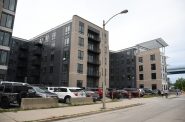 Jun 28th, 2024 by Jeramey Jannene
Jun 28th, 2024 by Jeramey Jannene


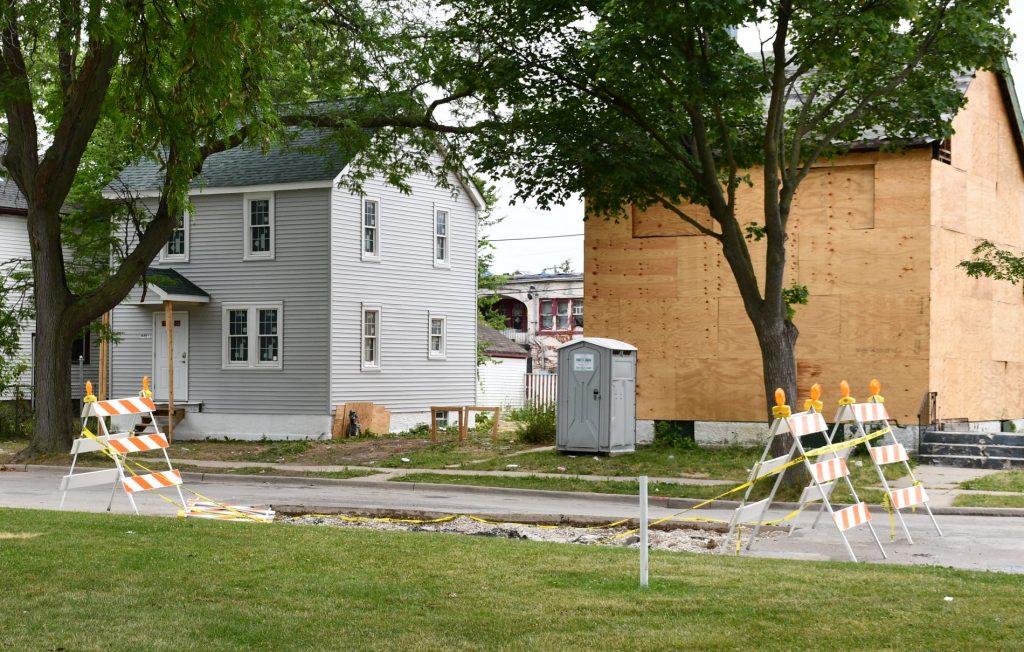
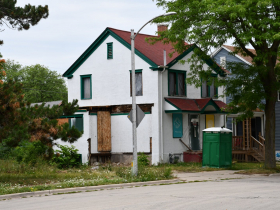
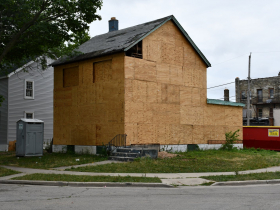
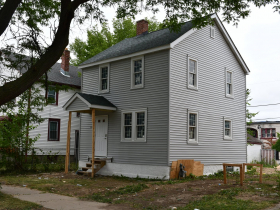
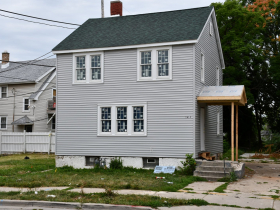
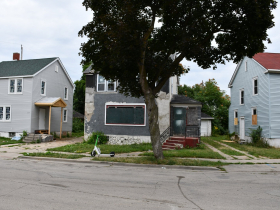
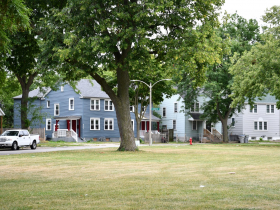



















Great work. I hope this is kept up. I can’t wait for the day where every home in Milwaukee is fixed up, all lots filled back up, and ADUs allowed and those built as well.
Just gotta make sure these are filled with owner-occupiers and not out-of-state slumlords screwing over our population.
Hope it succeeds. Dan Hoan didn’t defeat fellow Socialist Emil Seidel for mayor. Seidel lost re-election to Gerhard Bading, the Fusion (Democratic-Republican alliance) candidate in 1912 and 1914. Hoan overcame the Democratic-Republican Fusion to defeat Bading in 1916.